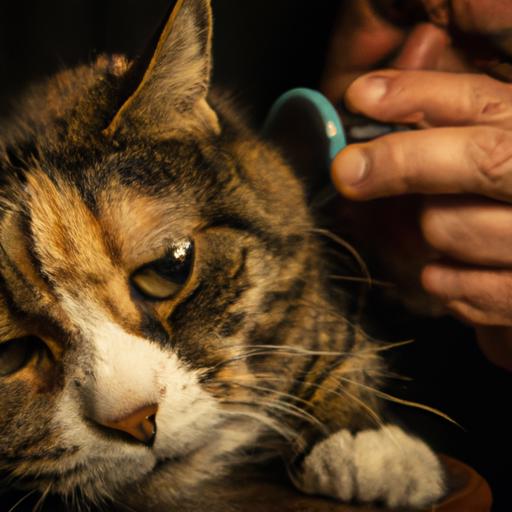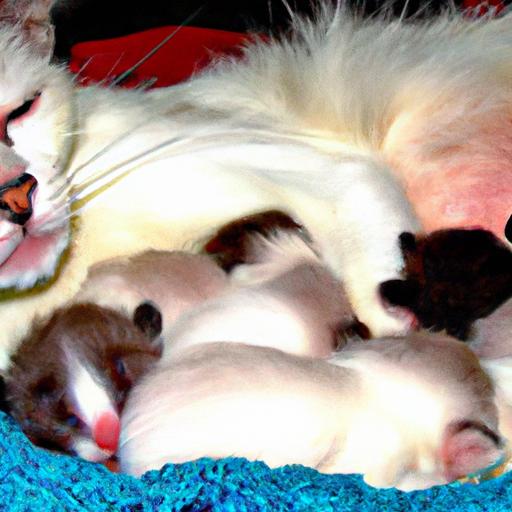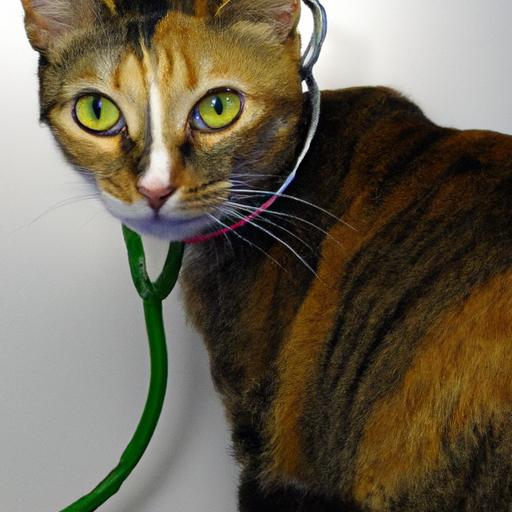
Recognizing Symptoms of Feline T-Cell Lymphoma
Learn how to recognize symptoms of feline T-Cell lymphoma in cats. Early detection is key for prompt treatment and better prognosis. Read more here.
Introduction
If you’re a cat owner, it’s essential to be aware of potential health issues that can affect your feline companion. One such condition is feline T-cell lymphoma, a type of cancer that can have a significant impact on your cat’s well-being. Recognizing the symptoms of this disease early on is crucial for prompt diagnosis and effective treatment. In this article, we will explore the common signs and symptoms of feline T-cell lymphoma, empowering you to seek timely veterinary care and provide your cat with the best chance for recovery.

Recognizing Symptoms of Feline T-Cell Lymphoma
Feline T-cell lymphoma is characterized by the abnormal growth of T-cells, a type of white blood cells, in various parts of a cat’s body. While the symptoms may vary depending on the affected areas, there are several common signs to look out for. By paying attention to these indicators, you can catch the disease in its early stages and ensure timely intervention.
Physical Signs to Look Out For
Physical manifestations of feline T-cell lymphoma can include:
-
Enlarged Lymph Nodes: Palpating your cat’s lymph nodes can help you detect any unusual swelling. Lymph nodes are typically found in the neck, under the jaw, in front of the shoulders, and behind the knees. If you notice any enlarged or firm lymph nodes, it may be a cause for concern.
-
Weight Loss: Unexplained weight loss is often a red flag for various health issues, including feline T-cell lymphoma. If your cat is losing weight despite having a regular appetite, it’s essential to consult your veterinarian for further evaluation.
-
Gastrointestinal Symptoms: Cats with T-cell lymphoma may experience gastrointestinal problems such as vomiting, diarrhea, or constipation. These symptoms can occur due to the presence of tumors or inflammation in the digestive tract.
Behavioral Changes
Apart from physical signs, feline T-cell lymphoma can also manifest through behavioral changes. Cats affected by this condition may exhibit:
-
Lethargy: A noticeable decrease in energy levels, increased sleepiness, or a lack of interest in activities they once enjoyed can be indicative of feline T-cell lymphoma.
-
Changes in Appetite: Cats may experience a loss of appetite or a decrease in food consumption when suffering from this disease. Conversely, some cats may exhibit increased hunger due to the metabolic effects of cancer.
-
Altered Grooming Habits: Cats are known for their meticulous grooming habits. However, if you notice a decline in grooming or an unkempt appearance, it could be a sign that your cat is unwell.
Frequently Asked Questions (FAQ)
What is feline T-cell lymphoma?
Feline T-cell lymphoma is a type of cancer that affects a cat’s immune system, specifically the T-cells. These abnormal white blood cells multiply uncontrollably, forming tumors or infiltrating various organs and tissues.
Are there any specific breeds more prone to developing this condition?
While feline T-cell lymphoma can affect any cat, certain breeds, such as Siamese and Oriental breeds, have a higher predisposition to developing this disease. However, it is essential to remember that any cat can be susceptible.
How is feline T-cell lymphoma diagnosed?
To diagnose feline T-cell lymphoma, your veterinarian will perform a thorough physical examination, evaluate your cat’s medical history, and conduct diagnostic tests. These may include blood tests, imaging studies (such as X-rays or ultrasounds), and a biopsy of the affected tissue.
What treatment options are available for feline T-cell lymphoma?
The treatment options for feline T-cell lymphoma depend on various factors, including the stage of the disease and the overall health of the cat. Treatment may involve chemotherapy, radiation therapy, immunotherapy, or a combination of these approaches. Your veterinarian will discuss the most suitable treatment plan for your cat.
Can feline T-cell lymphoma be prevented?
Unfortunately, there are no specific measures to prevent feline T-cell lymphoma. However, maintaining regular veterinary check-ups, providing a balanced diet, and minimizing exposure to potential carcinogens can help support your cat’s overall health and potentially reduce the risk of developing the disease.
Conclusion
Recognizing the symptoms of feline T-cell lymphoma is paramount for ensuring early diagnosis and appropriate treatment for your beloved feline friend. By staying vigilant and observing any physical changes or behavioral deviations in your cat, you can play a critical role in their well-being. If you suspect your cat may be showing signs of feline T-cell lymphoma, it is crucial to consult your veterinarian promptly. Remember, early intervention can significantly improve the prognosis and quality of life for cats affected by this condition. Stay informed, be proactive, and provide the care your feline companion deserves.
References:
- Reference 1
- Reference 2
- Reference 3
































